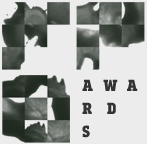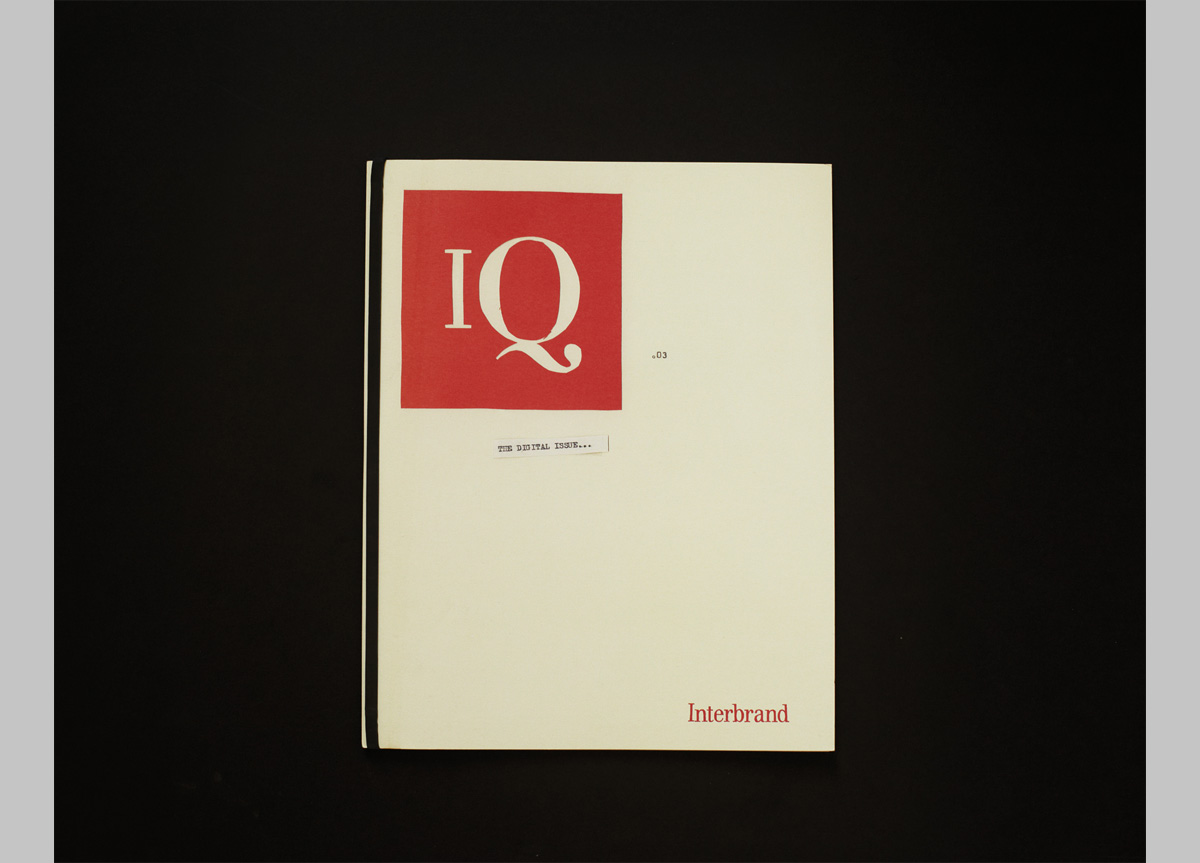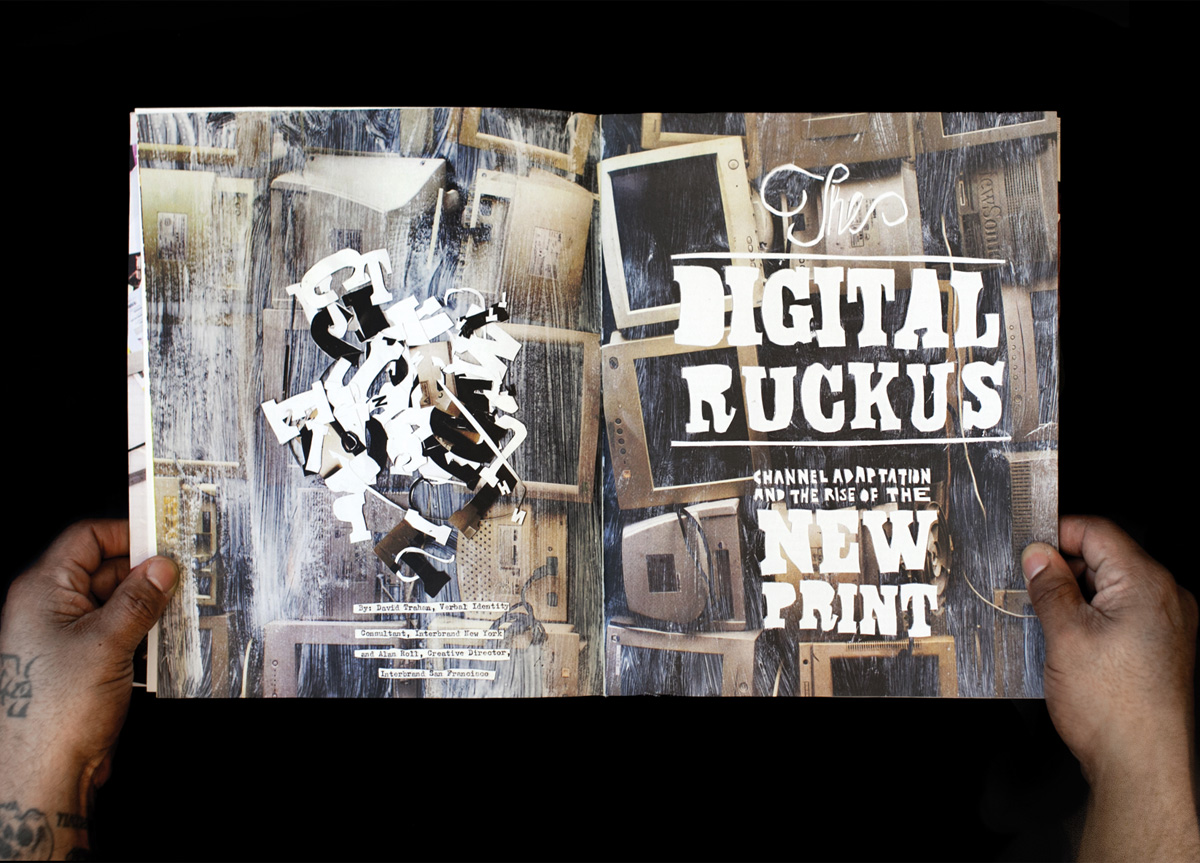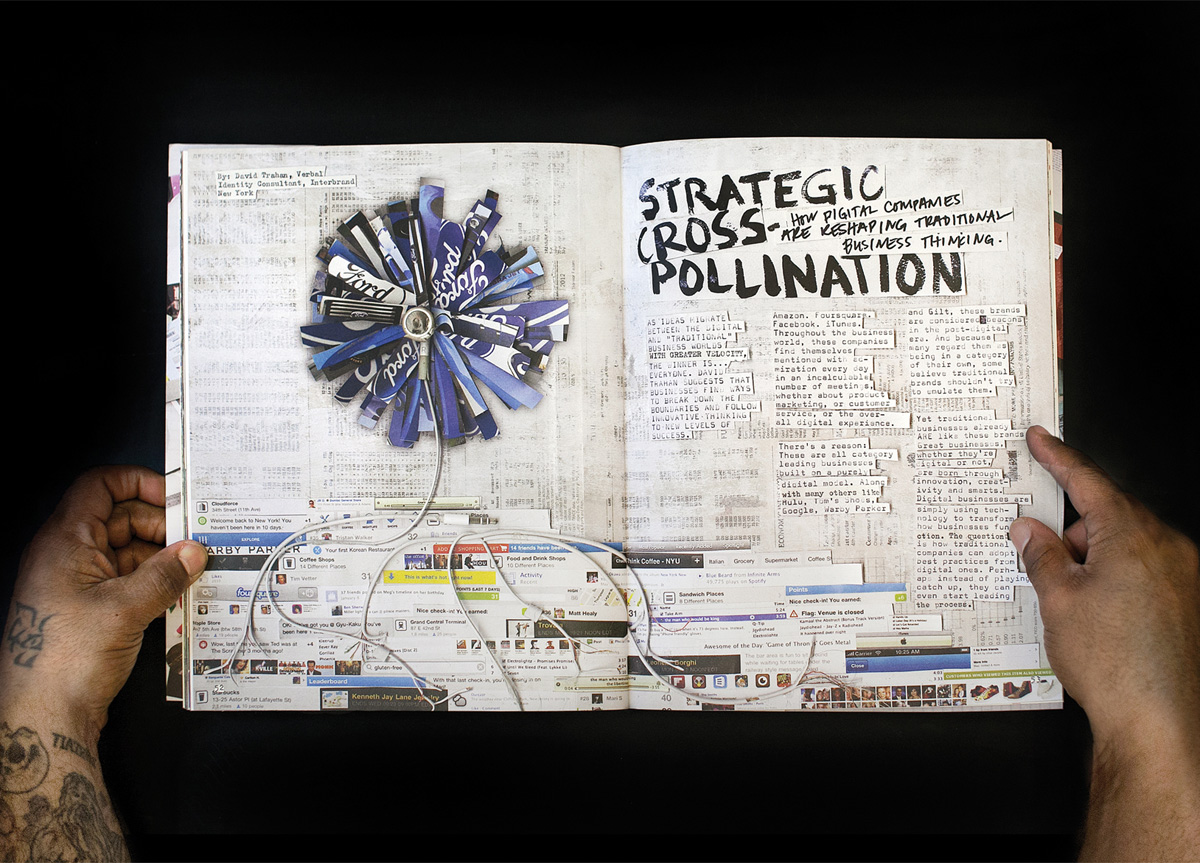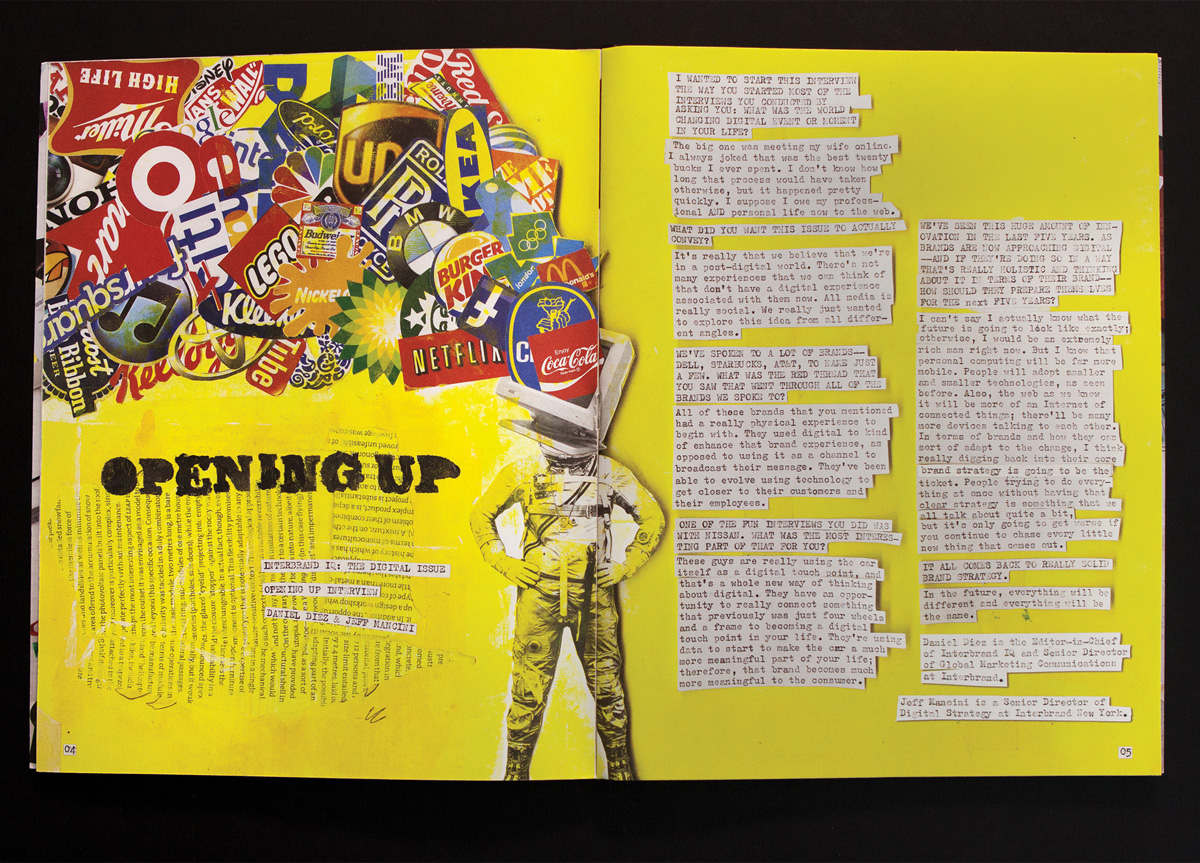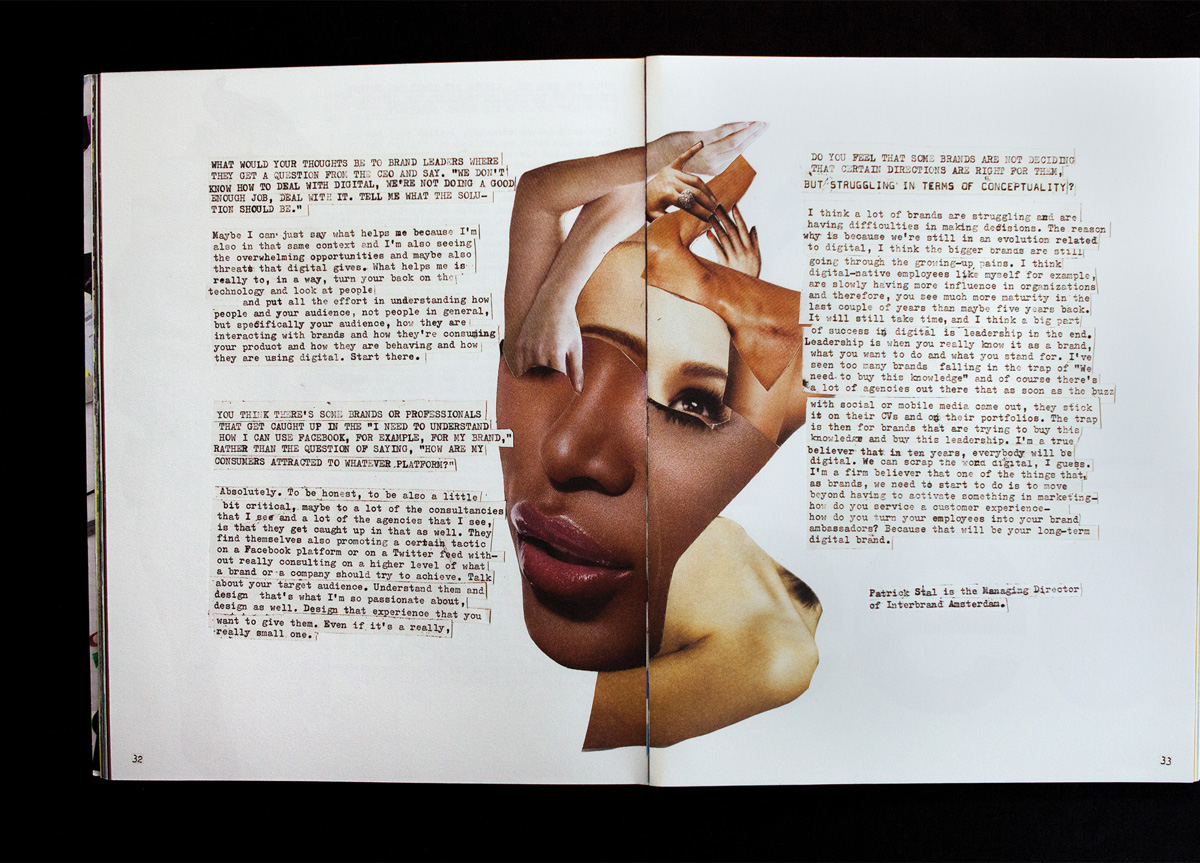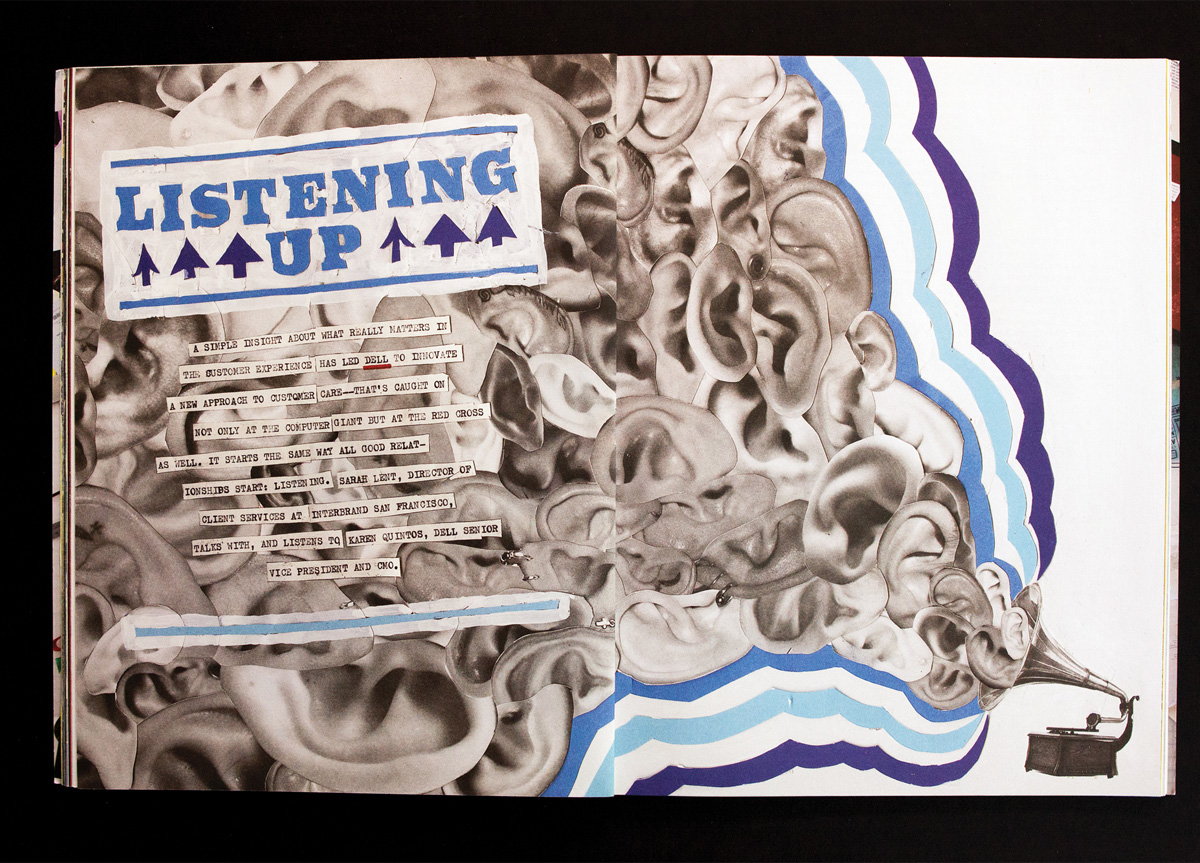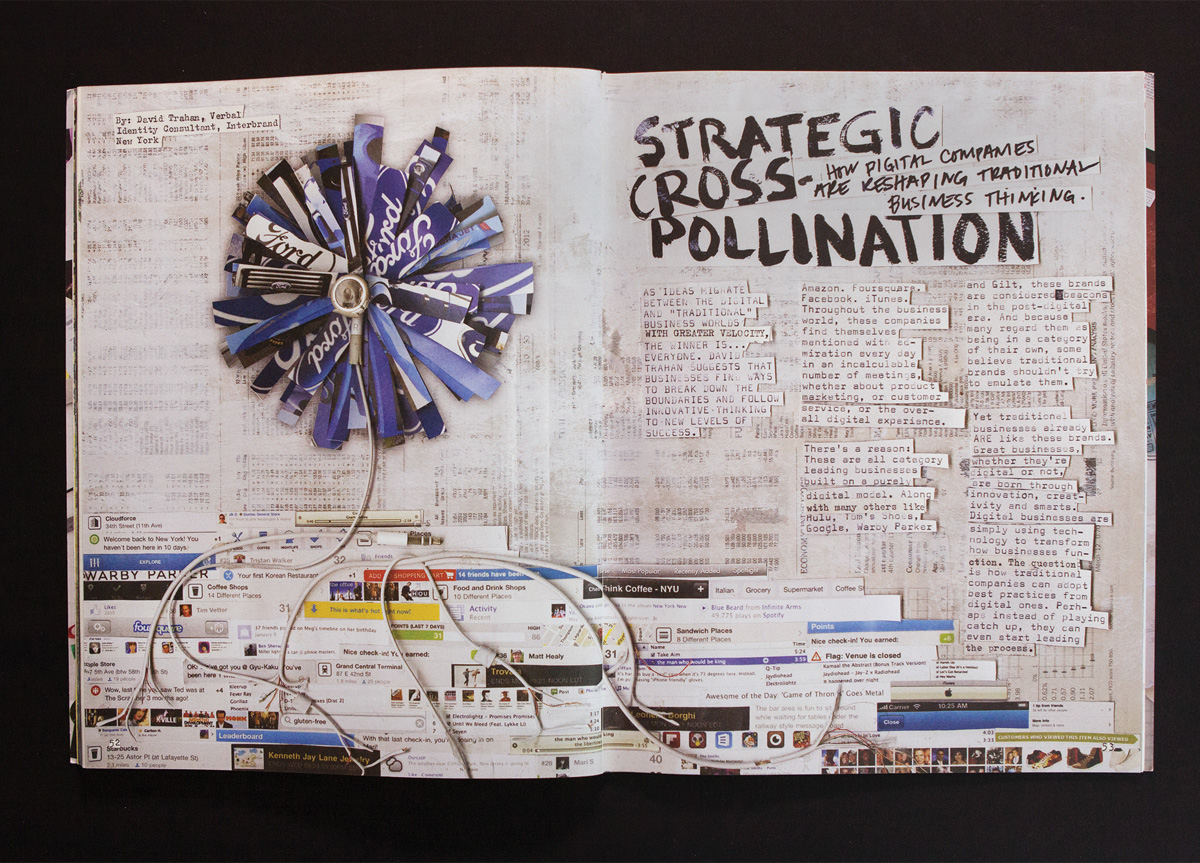CLIENT
Interbrand New York is wide and diverse. Strategists to designers, marketers to financial managers. They are music junkies, foodies, and from all corners of the globe. Each department is isolated by their responsibilities to their clients and vendors, but joined together by a common love for brands.
BRIEF
“IQ” is a print platform devoted to new thinking in the field of branding. For The Digital Issue, we needed to create an edition that accurately expressed and supported the client’s digital point of view in a way that would appeal to C‑suite executives, new clients, and employees.
APPROACH
The goal of The Digital Issue, specifically, was to showcase the most inspiring thinking in digital printing, but the challenge was to do so in a way that was unexpected, true to IQ’s print tradition, and creatively answer the question, “Why did you print the digital issue?” Creating The Digital Issue pushed the boundaries of IQ further than ever before. 72 pages, every word handcrafted—either hand-drawn or typed on analog typewriters. This engaging, physical brand experience embodies our digital point of view.
